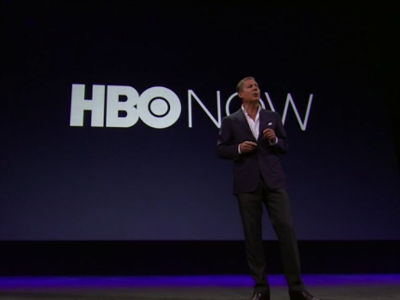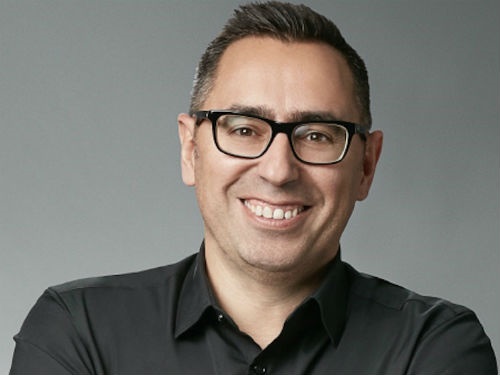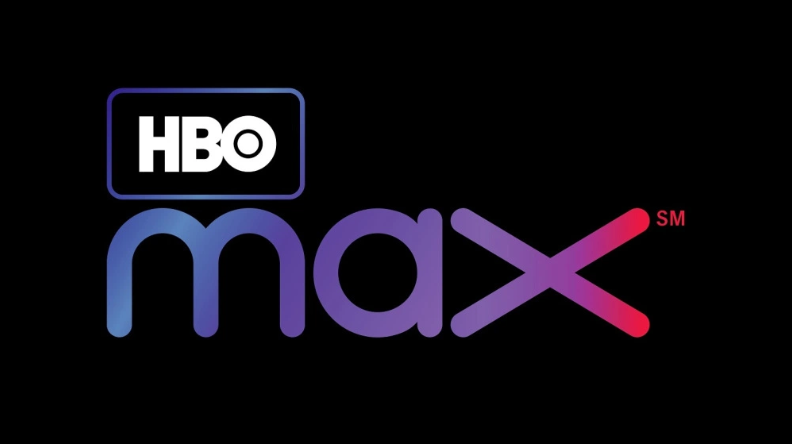It’s Not TV, It’s HB(Uh)O
AT&T’s much anticipated Investor Day Oct 29 may not have wowed Wall Street as was intended, but it may have an unintended emotional effect on its distributors.
The general analyst reaction to the multi-hour Investor Day -- essentially AT&T’s coming out party for its HBO Max service -- was a resounding “meh.” Words like “underwhelming,” “unanswered questions,” and “will probably anger its existing distributors,” were in heavy use in the analyst community. That doesn’t look like much of an endorsement for the service, but I’m not sure AT&T really cares.
Investors also yawned after the Investor Day, which some believed would put AT&T on the same mountain top as its rival streamer -- The Walt Disney Co. -- which is about to launch its newest streaming product Disney+ on Nov. 12. Disney stock soared 13% the first trading day after it unveiled Disney+ in a nearly three-hour presentation at its own Burbank studios on April 11. AT&T, the day after its two-hour HBO Max unveiling, was up less than 1%. Things weren’t any better the next day -- AT&T stock closed Oct. 31 at $38.20, up 0.8%.
Granted, Disney startled the investment community in April with the low monthly price-point for Disney+ -- $6.99. MoffettNathanson media analyst Michael Nathanson wrote at the time there was “a collective gasp” in the room when pricing was revealed.
HBO Max will debut in May, so there is still some time for AT&T to soften some of the sharp edges of the service. But at $14.99, HBO Max appears meant to replace existing offerings HBO Now and the linear HBO service and its sister website HBO Go.

Distributors, if they aren’t angry yet, probably will be soon. Back in 2015, in the days before HBO was gobbled up by the phone company, the old HBO guard was very sensitive to how it launched its first streaming product HBO Now. Then-HBO chairman and CEO Richard Plepler made a concerted effort to let distributors know that HBO Now was not in competition with the linear product. HBO Now was priced at the same price point for the linear service and distributors were in on the marketing and selling of the offering, which was targeted at broadband-only customers. Plepler, who left HBO in February, and his team made it clear that HBO Now wasn’t being created to compete with traditional distributors, but to expand the products they could offer customers who had cut the video cord.
Now the reality may have been different -- HBO Now, which some distributors believe has cannibalized the linear product, has about 5 million customers, all of which are expected to be converted to HBO Max. But back then there was at least an effort made on behalf of the programmer to try to massage some battered distributor egos. This time though, it seems like HBO and AT&T are just rubbing it in the distributor’s face.
The smarter way to stay on top of the multichannel video marketplace. Sign up below.

HBO Max is priced about the same as what traditional distributors are charging for HBO -- although some smaller distributors price HBO as high as $19.99 per month. But HBO Max has a lot more original programming and a deeper library and, according to several analysts, a better interface. WarnerMedia CEO John Stankey (also COO of AT&T) said during the Investor Day that the company looks at the Max service as an “IQ Test” for existing HBO subscribers. “Why wouldn’t you want twice the content for the same price?” he asked.
But HBO Max is an IQ test for distributors too. They have to decide whether they want to sell a premium channel that compensates them less, or use that channel capacity for other, more profitable services like broadband.

Otter Media CEO Tony Goncalves explained at the Investor Day that when HBO Max launches, HBO customers can watch the entirety of the HBO service on the HBO Max app as well as that service’s additional content. The existing linear HBO channel will also still be accessible “through your DirecTV or AT&T service,” he said.
Goncalves added that HBO is in “active discussions” with distributors and that the “intent is to get these 30-million-plus customers access to HBO Max as soon as we can.”
Stankey added that the company is “optimistic that we can actually open up agreements and do something proactively. Obviously it takes two parties to agree to do that. That’s the approach we have been using up to this point.”
It seems that even HBO is a little confused by the offering, or at least wants to appear that it can have its cake and eat it too.

Goncalves called HBO Max “our workhorse,” adding it is the greatest consumer value proposition in the stable, bringing together the HBO content and service with content from HBO Max.
“But we’re fortunate to have a base of consumers today that’s north of 30 million and they are accessing the content in a certain way, and we’re not going to leave them behind,” Goncalves said. “So over time, we should see audience migrating to this incredible value proposition that we showed you today, and we’ll migrate folks over to that particular product. But in the meantime, if a customer is comfortable accessing the content through the HBO Now product or HBO Go, we are going to allow them to continue to do that.”
But for some distributors, holding on to the linear HBO service -- which can number as high as 10 separate channels -- may not be worth it. While the details are still a little murky as to the relationship between HBO legacy and HBO Max, it would seem obvious that most consumers would go for the streaming service.
And that, at least to some distributors, removes the incentive to renew their HBO deals.
“At some point you’re going to say, ‘Why am I holding this huge block of channel capacity for HBO channels, when I could be using it for faster internet speeds,’” said the distributor who asked not to be named.
In a research note entitled “Product Looks Good, But is Not a Game-Changer,” Evercore ISI media analyst Vijay Jayant wrote that AT&T’s HBO Max strategy is likely to rub distributors the wrong way.
“We expect this situation to create conflict between HBO and non-AT&T distributors, as AT&T is likely to argue that the distributors should switch to promoting HBOmax, with a much smaller revenue share, while the distributors are likely to argue that the non-max HBO
product has been devalued, and hence they should pay a smaller revenue share on that product. It’s unclear how these negotiations will shake out over time,” Jayant wrote.
Distributors have long chafed at streaming services that offered more or equal amounts of content for a lower price directly to consumers than what the MVPDs were already paying. It was at the core of at least one carriage battle for premium service Starz -- since resolved -- which was priced at $8.99/month as a standalone streaming service, but $11.95/month via traditional pay TV distributors.
At Dish Network, which dropped HBO last November, the impasse was fueled by what it said was the programmer’s demand that it pay for a guaranteed number of subscribers, regardless of how many actually sign up for service.
Dish chairman Charlie Ergen was criticized for dropping HBO at the time. Now he looks like a freaking genius.
Because unlike his distribution counterparts, Charlie is not going to have to worry about splits and marketing and mandatory minimums and the like. If his customers want HBO in any of its iterations, they are going to have to fend for themselves.
It has been a year since Dish dropped HBO -- it officially went dark on Oct. 31, 2018 -- and the impact has been fairly minimal. After an initial spike in pay TV subscriber losses that may or may not have had anything to do with the loss of HBO (Dish also dropped several regional sports networks in the time frame) -- Dish lost 334,000 subs in Q4 2018 (compared to 39,000 in the prior year) and 259,000 in Q1 2019 (compared to 94,000 in the prior year) -- the shock seems to have lifted. Dish lost 31,000 pay TV customers in Q2 (compared to 151,000 in the prior year).
Whether other distributors follow Dish’s lead will depend on when they last signed a carriage renewal with HBO. But for distributors that are looking for an excuse to drop the premium service, AT&T seems to have given it to them.
Now you may ask, what does AT&T care about other distributors? They have DirecTV (or AT&T TV) or whatever they’re calling their satellite distribution service. And that is true. DirecTV has about 18 million pay TV customers, but it is bleeding subscribers like a sieve. In Q3, between DirecTV, AT&T TV Now (formerly DirecTV Now) and U-verse TV, AT&T lost 1.4 million customers. That’s huge. And though AT&T has said DirecTV’s losses have peaked, that doesn’t mean they won’t lose more.
AT&T is expected to try to migrate most of those DirecTV customers to its thin-client AT&T TV service, which also is expected to be launched next year. No pricing info for the service has been released, but it is expected to include live TV, programming from AT&T’s Turner networks and HBO Max.
AT&T also plans an ad-supported version of HBO Max for 2021, as well as live TV bundles as part of the service eventually, which could also complicate things.
“We are a lot more skeptical about these components,” Venkateshwar wrote. “Apart from brand dissonance with respect to HBO’s premium nature, these features also seem forced to make economics work in the context of the investment scale. Brand consistency is also likely to be a problem due to content on Max being skewed more towards young adults which has not really been a target for HBO given its premium price point. Also, including some of these components are likely to make discussions with legacy distributors a lot more contentious.”
In the meantime, AT&T plans to beef up the HBO Max subscriber coffers by giving it away for free to its wireless subscribers, a strategy it used for the skinny bundles AT&T Watch TV, an experiment it has since ended.
AT&T has predicted that it will sign on 50 million HBO Max subscribers by 2025, but that includes about 34 million existing HBO customers. And in addition to making HBO Max available for free to its unlimited wireless customers, premium AT&T pay TV and 1 Gigabit per second broadband subscribers also will get the service for no extra charge. Venkateshwar estimated that would account for about 5 million subscribers within its wireless base that would be eligible. That works out to nearly 40 million subscribers, making hitting that 50 million customer goal not that much of a stretch. Disney, which signed a deal with Verizon to make Disney+ available to their wireless customers free for 12 months, expects to add 7 million to 10 million customers by the end of this year.
AT&T has been saying for more than a year that they see the future of TV in eyeballs and targeted advertising, constantly reminding anyone within earshot that they have access to about 170 million customers through all of their properties. But how they approach monetizing those eyeballs is going to be crucial. Remember when Fox bought MySpace? And how they were going to push adds and programming to that treasure trove of young online users? Remember how that worked out? (Hint: Fox bought MySpace in 2005 for $580 million and sold it in 2012 for $35 million)
The key will be how AT&T uses its clout. If it decides to just carpet bomb those 170 million customers with ads and whatnot, it will be a disaster. I don’t know about you, but the second my mobile phone starts lighting up with ads that I never requested, that phone is immediately going into the river. I’m guessing that with the myriad options for wireless service and the ease at which most make it for consumers to switch, many annoyed customers would do the same.
AT&T is not doing this all without some expense either, which has some analysts scratching their heads. In his report, Venkateshwar wrote that AT&T will spend about $19 billion over the next five years to get 16 million cumulative HBO Max subscribers. While not all of that money will be spent on subscriber acquisition, Venkateshwar posits that in order for the service to work it either has to have much lower churn than its rivals or its base of subscribers has to be much higher than AT&T’s guidance. In addition, AT&T will have to drive other revenue sources -- particularly advertising, which the company has said is a goal -- and content licensing.
Streaming video churn is high, especially for services that market themselves mainly on price -- just ask AT&T TV Now (formerly DirecTV Now) which sank like a stone after it raised prices. Free is a great way to bulk up subscriber rolls, but don’t be surprised when they bail as soon as the price gets too high. And it will. If there is a fundamental truth to the television business it is this -- programming is costly and nobody makes quality content for free.
“We also believe the vision for the product doesn’t appear to have been fully crystallized given the open questions around AT&T TV’s integration into the service, which increases the chances for a non-linear execution path,” Venkateshwar wrote. “Also, based on the guidance provided for HBO Max revenue for next year at the event ($100 million), the company does not appear to expect a significant amount of paid gross adds until 2021 and therefore much of the company’s total revenue growth guidance for next year appears to be based on acceleration in zero-margin equipment revenues.”
But maybe this is working out exactly the way AT&T wants it to work out. The consensus belief is that when AT&T bought DirecTV in 2015, it knew the satellite business was dying, but saw value in the company’s programming contracts to fuel other distribution products. DirecTV is losing subscribers by the ton, but it was all part of the chain that started with AT&T’s wireline U-Verse TV customers migrating to DirecTV and ending with their move to DirecTV Now (now AT&T TV Now). With AT&T TV Now struggling -- it has lost about 700,000 customers in the past four quarters -- the focus is on HBO Max and AT&T TV, the IP-based streaming service that will also launch next year.
And it may be wildly successful. One thing you can bank on in the TV business is that nobody gets ahead by standing still. At the same time, upsetting the distributor base that is still paying the freight for content companies via traditional carriage fees is no way to move forward either.
So, it could really go either way. And to those that are looking for signs from above, I give you this: WarnerMedia Entertainment chairman Robert Greenblatt walked onto the stage at the Investor Day to the tune of the theme song to former HBO series Six Feet Under, which he produced earlier in his career. Six Feet Under was an Emmy-award winning series about a severely dysfunctional family that made its living by burying the dead. Let’s hope that in the next few years, we don’t look at that entrance as an omen for what was to be.
